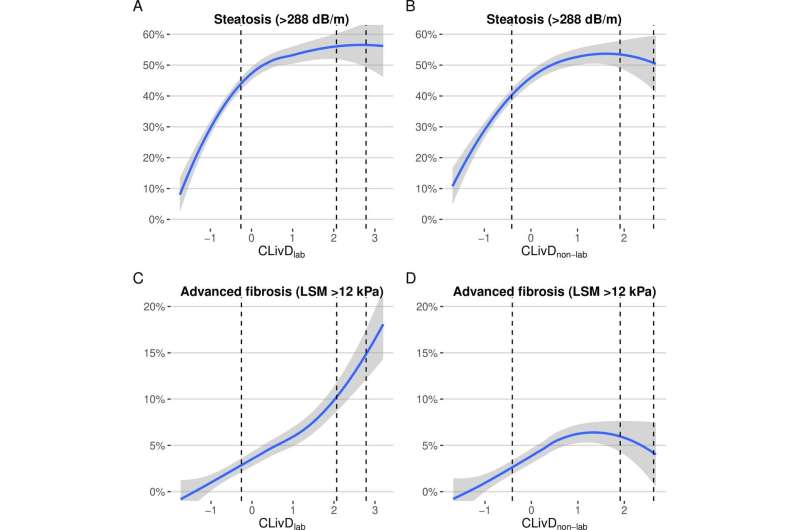This article has been reviewed according to Science X's editorial process and policies. Editors have highlighted the following attributes while ensuring the content's credibility:
fact-checked
proofread
New technique could improve liver fibrosis treatment

Chronic liver disease, a growing threat to global health, often progresses silently in its early stages. Detecting its precursor, steatotic liver disease (SLD), and advanced liver fibrosis before complications arise is crucial to prevent devastating outcomes. The newly developed Chronic Liver Disease (CLivD) score offers a promising non-invasive approach to this challenge.
In a recent study involving a US general population sample, researchers explored the CLivD score's ability to identify SLD and advanced fibrosis, assessed using liver stiffness measurement (LSM). The study also evaluated the potential of combining CLivD with the established fibrosis-4 (FIB-4) score for enhanced detection.
The results revealed a significant association between higher CLivD scores and the presence of both SLD and advanced fibrosis. Notably, a sequential CLivD-first approach followed by FIB-4 testing identified a subgroup with a remarkably high prevalence of advanced fibrosis—55%, far surpassing the yield of FIB-4 alone.
Just as importantly, nearly half of the study population had minimal-risk CLivD scores, indicating a low likelihood of advanced fibrosis. This finding suggests that CLivD can effectively streamline screening by eliminating the need for further evaluation with FIB-4 in many individuals.
These findings hold exciting implications for the early detection of liver disease. The CLivD score, calculated using readily accessible information such as age, sex, and lifestyle habits, can be a valuable first step in identifying at-risk individuals. By efficiently stratifying the population, CLivD can optimize resource allocation by directing further testing toward those with a higher risk of advanced liver disease.
This research represents a significant leap forward in the fight against chronic liver disease. Incorporating the CLivD score into screening strategies has the potential to prevent complications and improve patient outcomes for the millions of individuals facing this silent threat. While further validation in different populations and settings is warranted, the CLivD score's promise for revolutionizing early liver disease detection is undeniable.
The work is published in the journal eGastroenterology.
More information: Fredrik Åberg et al, CLivD score modifies FIB-4 performance in liver fibrosis detection in the US general population, eGastroenterology (2023). DOI: 10.1136/egastro-2023-100035


















